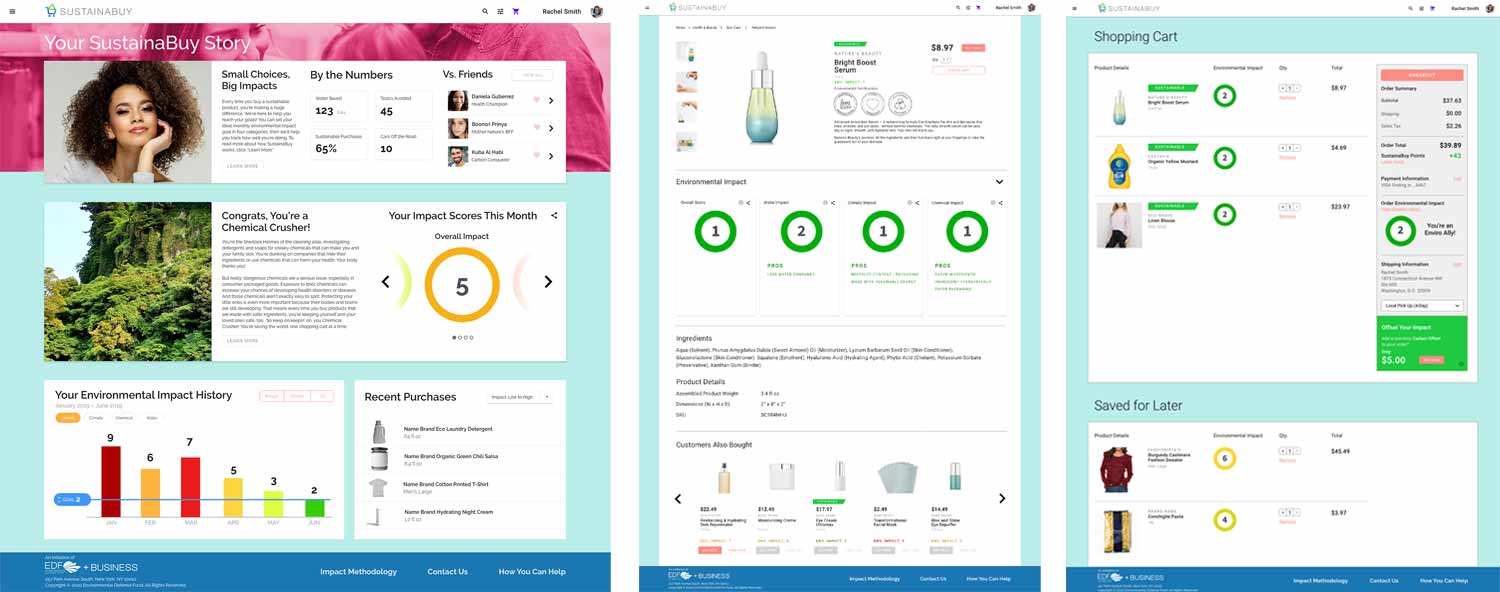- Resources
- Companies can be more transparent about clean, sustainable products this holiday season
Resources
Companies can be more transparent about clean, sustainable products this holiday season
Published: November 25, 2020 by Jenny Ahlen
Companies have long been labeling products with terms like natural or clean that call their attention to greener and safer choices. But what do these claims actually mean? Unless verified certifications are used, attempts by brands to help shoppers find sustainable products can often make it more confusing.

Personally, I want to go into a store, or shop online, and feel confident that the product I choose is safer for the planet and my family’s health. I want the product label to list out all the ingredients and the climate impacts – factors like how much water was used, whether deforestation occurred, what the carbon footprint was.
I share these preferences with a growing consumer that are demanding transparency about the products they buy. Two-thirds of consumers expect companies to clearly explain environmental benefits on product labels or websites. This demand for transparency dovetails with consumer preference for more sustainable products, a market which is projected to reach $150 billion in sales by the end of this year.
As consumers scrutinize products and their labels like never before, companies have an opportunity to empower customers with the information needed to make more sustainable choices, without having to research or decipher complicated labels.
Three ways companies can cultivate customer loyalty and capture this growing market:
- Translate product data into compelling information – Make it easy for consumers to see the sustainability profile of a product by conveying environmental and ingredient information on its product packaging and online description. This will help consumers decipher packaging claims within the proper context. One place to start is by using trusted certifications, which serve as a useful shortcut for consumers to understand a product’s sustainability profile. But not all certifications are created equal. Make sure the certifications your suppliers are using on products are credible and align to the goals you’ve set.
- Reward suppliers that are delivering sustainable options – Take advantage of the “real estate” you have in store and online to call attention to products with better environmental and health performance. If you’re an e-commerce company, you can consider sharing supplier success stories on your website and online marketplace that showcase how leading brands have cascaded sustainability throughout their business. In store, increase marketing and signage that highlights sustainable options to drive customers awareness andaccess to better products.
- Incentivize consumers to choose sustainable products – Give consumers incentives, including discounts and reward points, for making sustainable choices, such as choosing a product with safer ingredients or, when online shopping, opting for less packaging and/or low emissions shipping. Companies can also consider enabling consumers to track their overall environmental and health impacts of their purchases over time by using their e-commerce platforms to provide shoppers with a personal dashboard of data. Companies, too, can consider gamifying aspects that give consumers the ability to connect with and measure up against other shoppers on the sustainability leaderboard.

These three tactics – be transparent, reward suppliers and incentivize consumers – are the basis of SustainaBuy, a website prototype that demonstrates how companies can seamlessly use their online platforms to increase transparency around the environmental and health impacts of products and help consumers make sustainable purchases.
There’s no question that consumers want more transparency into the safety and sustainability of products. Tapping into this market can bring enormous reputational and financial benefits, and the time to act is this holiday shopping season.
Follow Jenny on Twitter.
